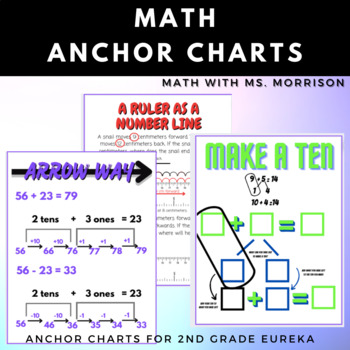2nd Grade Math Anchor Charts
- PDF
What educators are saying
Description
These anchor charts cover a variety of second grade math topics.
Some anchor charts provide helpful information and others are interactive anchor charts for students to complete and keep as an example.
Module 1: Quick Tens and Ones, Make a Ten, Take a Ten
Module 2: Tools to measure, Measure Accurately, Ruler as a Numberline
Module 3: Place Value Chart, Numbers in Different Forms, More Than 10 Tens, Comparing Numbers, 10 More 10 Less 1 More 1 Less
Module 4: Arrow Way, Two Bar Tape Diagram
Module 5: Bundling, Unbundling
Module 6: Equal Groups, Arrays
Module 7: Counting Coins, Bar Graphs
Module 8: Fractions, Shapes, Clocks
A total of 25 anchor charts!
They align well to specific math curriculums (Engage NY,Eureka).
Tags: EngageNY, Math, Anchor Charts, Templates




